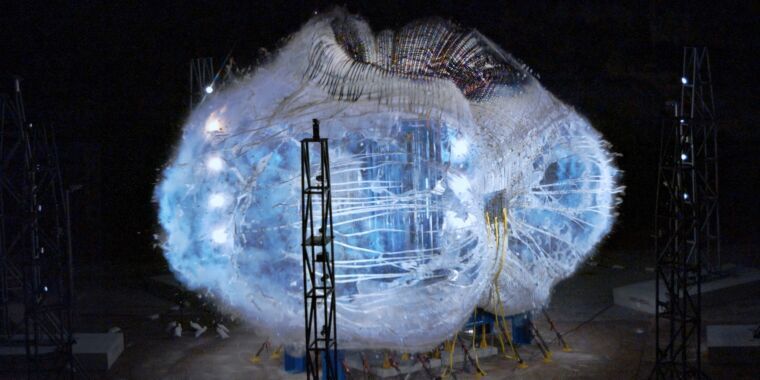During a December test at NASA’s Marshall Space Flight Center in Alabama, Sierra Space’s 300 cubic meter inflatable structure withstood five times the pressure it would need to handle in space. The so-called ultimate burst pressure test was designed to measure the limits of the soft goods technology Sierra Space is developing alongside ILC Dover, which also built spacesuits for NASA.
The 27-foot-diameter (8.2-meter) inflatable structure burst at 77 psi, exceeding NASA’s recommended safety standard of 60.8 psi, which is four times the module’s real-life operating pressure at 15.2 psi.
The recent full-scale burst test will provide data for a milestone on the Orbital Reef program with NASA, which has a $172 million funding agreement with the Blue Origin-led Orbital Reef team to develop technologies for a future space station.
“We are well on our way to having our habitats ready for launch in 2026,” Buckley said. Last year, Sierra Space disclosed plans to launch a LIFE habitat into orbit as a pathfinder before Orbital Reef. This could fly by the end of 2026, said Tom Vice, Sierra Space’s CEO, in a presentation last year.



But how will it cope with impacts from space debris? Even a tiny grain of sand size bit delivers a significant punch when it’s at orbital speeds
There are many advantages to flexible materials and I would say impact resistance is one of them. The biggest thing to worry about on a space station is piercing damage, which can be absorbed more easily if the material has the ability to move. The skin used on bigelow was more restistant to ballistics than the rest of the ISS. Theres a reason kevlar wests are very effective in protection.
As I understand it, thos is basically just a pressure vessel. They will now work on a shielding layer(s) on top of this.